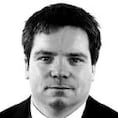The State is changing, according to the findings of Census 2022. The population is growing, people’s views on religion are changing and the way many of us work is no longer the way we once did. Here are five takeaways from Tuesday’s publication.
Growth: The story of this census is one of growth. The population, at 5.15 million, is 83 per cent higher than at its lowest point in 1961, when just 2.82 million people lived in the State following the grim 1950s, a decade in which 500,000 people emigrated. Since 1961, the population has grown in all but one census, with 1986-1991 the exception.
For the first time though, net immigration (people coming here) is a greater driver than natural increase (births). This makes the census different from previous ones this century, where strong population growth was driven by a baby boom and a population that was living for longer. Now, birth rates are waning and immigration has taken over.

Five numbers that reveal how Ireland is changing
The results of Census 2022 are here. As usual it’s a mine of information, with figures detailing the state we’re in, from our religious affiliations to how many people smoke, how we get to work and the average age. Ronan McGreevy talks us through the headline figures , with vox pops from Catherine Mellett.
Religion: Once upon a time the Republic was synonymous with Catholicism. In 1961, 95 per cent of the population identified as such. The number identifying as Catholic has fallen from 88.4 per cent in 2002 to 84.2 per cent in 2011, but the fall from 79 per cent to 69 per cent in the last six years is the biggest reduction by far. The Central Statistics Office says this may partially be a result of the way in which the question was framed. Previously it was “What is your religion?” Now it is “What is your religion, if any?” and the first option is no religion, which 740,000 people (14.4 per cent) ticked, up from 480,000 in 2016.
READ MORE
There are 56 religious identities given in the census. The Orthodox churches saw the biggest growth (from 39,388 to 100,165), a number that will have since been further bolstered by Ukrainian refugees arriving. The Muslim population increased by 19,898 to 81,930; Church of Ireland or Presbyterian numbers remained steady (124,749 and 22,699 respectively). There are 33,043 Hindus; 2,193 Jews; 2,183 Sikhs; 1,800 Jedi Knights; 804 Quakers; 188 Satanists; 132 Scientologists; and 113 Hare Krishnas.
Diversity: Ireland has been a diverse country since the early part of the century and the percentage of the population born elsewhere exceeded one in 10 in 2006. Now, the foreign-born proportion is more than a million people (one in five). The number of non-Irish citizens in the census was 631,785 — some 12 per cent of the usually resident population and an increase of 96,310 on 2016. The number of people with dual Irish citizenship is 170,597.
The eastern European population fell as many migrants to the Republic returned home, but they were replaced by migrants from further afield. The State now has almost 100,000 people who identify with the Indian sub-continent made up of Indian/Pakistani and Bangladeshi citizens (94,000 in total). There are 26,828 people who identify as Chinese, 20,115 as Arab and 16,059 as Roma. More than 750,000 people living in the State speak a foreign language at home. Of those, 212,285 were born in Ireland. Polish remained the most commonly spoken foreign language with 123,968 people speaking it.
Housing: To nobody’s surprise the census shows a huge increase in average weekly rents. They went up 37 per cent to €273 per week (€1,183 per month) between 2016 and last year. This is also reflected in the 109,000 households in private rental accommodation where the weekly rent paid was €300 (€1,300 a month) or more, up from 48,933 households in 2016. Slightly surprisingly, the rate of home ownership, while on the decline, is still very high at 66 per cent, down from 68 per cent in 2016. The number of dwellings rented from private landlords increased by 7 per cent, roughly the same as the increase in the population.
Working from Home: This category was included in the census for the first time and reflects the massive shift in work patterns that have occurred since the Covid-19 pandemic. Nearly 750,000 people, a third of workers, indicated that they worked from home for at least some part of their week. Of those, more than 200,000 do so five days a week. Unsurprisingly, the biggest take-up is among those in business, the media and public service professionals — where 80 per cent have worked from home at some stage. It falls to just 4 per cent for those in the transport sector and 3 per cent in areas such as cleaning and catering.












